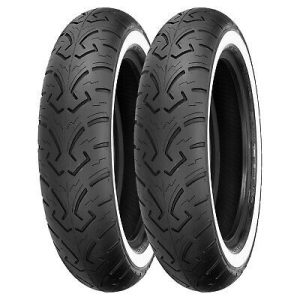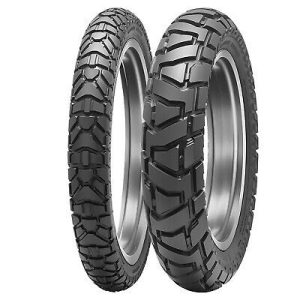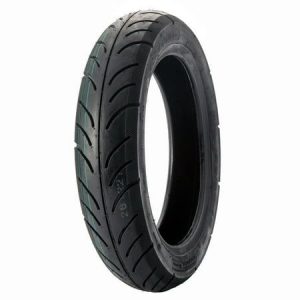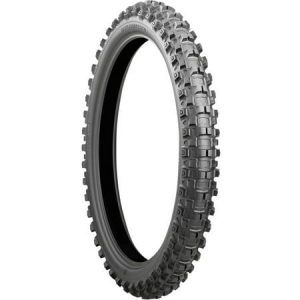For a smooth, safe, and enjoyable motorcycle ride, properly balanced tires are essential. Imbalanced tires can cause vibrations throughout the handlebars and motorcycle frame, leading to reduced control, uneven tire wear, and premature suspension wear. This guide empowers you to understand the importance of motorcycle tire balancing, the tools required, and the step-by-step process to achieve a perfectly balanced set of tires.
Why Balance Your Motorcycle Tires?
Motorcycle tires are susceptible to slight imperfections during manufacturing or wear and tear over time. These imperfections can cause weight inconsistencies around the circumference of the tire. Even minor imbalances can translate into significant vibrations at higher speeds, compromising your riding experience and potentially creating safety hazards.
Here’s a breakdown of the problems caused by unbalanced motorcycle tires:

-
Vibration: The most noticeable symptom of an unbalanced tire is a persistent vibration that increases with speed. This vibration can travel through the handlebars, footpegs, and seat, making for an uncomfortable and fatiguing ride.
-
Uneven Tire Wear: Imbalanced tires cause uneven weight distribution during rotation, leading to accelerated wear on specific sections of the tread. This reduces tire lifespan and necessitates earlier replacement.
-
Reduced Control: Vibrations caused by unbalanced tires can make it difficult to maintain control of the motorcycle, especially during high-speed maneuvers or braking. This can significantly impact your riding confidence and safety.
-
Premature Suspension Wear: The constant vibrations from unbalanced tires can stress the motorcycle’s suspension components, leading to premature wear and tear. This translates into additional repair costs down the road.
By regularly balancing your motorcycle tires, you can prevent these problems and ensure a smoother, safer, and more enjoyable riding experience.
Tools and Equipment for Motorcycle Tire Balancing: What You’ll Need
Before diving into the balancing process, ensure you have the necessary tools and equipment. Here’s a checklist:

-
Motorcycle Tire Balancing Stand: This specialized stand allows you to securely mount your motorcycle wheel and freely spin it for balancing. Balancing stands come in various styles, with some offering static balancing and others catering to dynamic balancing (explained later).
-
Wheel Weights: These small adhesive weights come in various sizes and are used to counterbalance any weight discrepancies in your tire. Choose wheel weights specifically designed for motorcycles, as they typically have a lower profile to fit within the limited space of motorcycle rims.
-
Tire Iron Set: A tire iron set is necessary for removing and reinstalling the tire from the rim during the balancing process. Ensure you have the appropriate size tire irons for your motorcycle wheels.
-
Rubber Mallet: A rubber mallet helps you gently seat the tire onto the rim without damaging the rim or the tire bead.
-
Valve Stem Tool: This tool helps remove and reinstall the valve stem from the rim during tire changes.
-
Tire Pressure Gauge: A reliable tire pressure gauge is crucial for ensuring your tires are inflated to the manufacturer’s recommended pressure after balancing.
-
Balancing Weights Pliers: While not essential, balancing weight pliers can simplify the process of attaching and removing wheel weights.
-
Safety Glasses: Always wear safety glasses when working on your motorcycle to protect your eyes from any debris or wayward tools.
With this toolkit assembled, you’re ready to tackle the task of balancing your motorcycle tires.
Unveiling Dynamic Balancing: For the Precision Seekers
While static balancing is a solid choice for most riders, some enthusiasts and professional racers might prefer the increased accuracy offered by dynamic balancing. Here’s what sets dynamic balancing apart:
Dynamic Balancing: Achieving Peak Precision
Dynamic balancing takes the process a step further by simulating real-world riding conditions. This method accounts for both lateral and radial imbalances that might not be fully addressed by static balancing. Here’s a basic overview of dynamic balancing:

-
Specialized Balancing Stand: Dynamic balancing requires a specialized balancing stand equipped with rollers or cones that allow the wheel to spin freely on both its horizontal and vertical axes. These stands typically involve more complex mechanisms compared to static balancing stands.
-
Balancing Process: The general process for dynamic balancing follows similar steps to static balancing, with the key difference being the way imbalances are detected. The machine spins the wheel and measures both lateral and radial vibrations throughout the rotation.
-
Weight Placement: Based on the machine’s readings, the technician strategically places weights on both the inner and outer rim flanges to counteract the detected imbalances. This ensures optimal balance across all planes of rotation.
Advantages of Dynamic Balancing:
-
Superior Accuracy: Dynamic balancing offers a more precise level of balancing by addressing both lateral and radial inconsistencies. This can be particularly beneficial for high-performance motorcycles or when dealing with very slight imbalances.
-
Reduced Vibration: By achieving a more complete balance, dynamic balancing can minimize vibrations even further, leading to a smoother and more comfortable ride at all speeds.
-
Extended Tire Life: By minimizing imbalances and ensuring even wear across the tread, dynamic balancing can potentially extend the lifespan of your motorcycle tires.

Considerations for Dynamic Balancing:
-
Cost: Dynamic balancing typically requires specialized equipment and might be more expensive than static balancing, either through purchasing a dynamic balancing stand or paying for the service at a motorcycle shop.
-
Complexity: The process itself might be slightly more complex for home mechanics due to the specialized equipment involved.
-
Accessibility: Not all motorcycle shops or home mechanics have access to dynamic balancing equipment. Static balancing remains a widely used and effective method for most riders.
Ultimately, the choice between static and dynamic balancing depends on your individual needs, budget, and access to equipment. Static balancing offers a practical and accessible solution for most riders, while dynamic balancing caters to those seeking the highest level of precision and performance.
Take Control of Your Ride: Invest in Proper Motorcycle Tire Balance
Now that you possess the knowledge and tools to tackle motorcycle tire balancing, take action! Regularly maintaining balanced tires is an investment in your safety, riding enjoyment, and the longevity of your motorcycle.

Don’t wait for vibrations or uneven tire wear to become a problem.
-
Purchase the necessary balancing tools or schedule an appointment with a trusted motorcycle shop for professional balancing.
-
Dedicate some time to mastering the balancing process, and experience the difference that perfectly balanced tires can make on your next ride.
Embrace a smoother, safer, and more enjoyable riding experience with properly balanced motorcycle tires. Happy riding!
